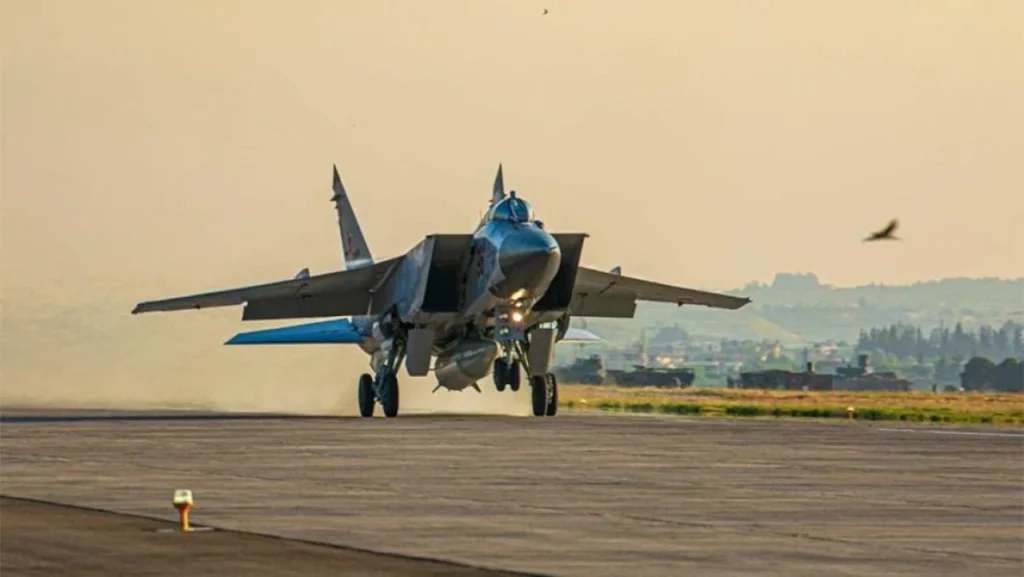Sergey Shoigu, Russia’s Minister of Defence, stated recently during a visit to the “Design Bureau of Machine Building” company in Kolomna that the missile systems “Iskander” and “Kinzhal” need to be improved based on their experience in the Armed Forces. Since he did not elaborate on the improvements, one can only speculate on the possible directions for improving these weapons.
In 2006, the Russian Army version of the 9K720 “Iskander-M” operational-tactical missile system entered service. This system boasted a range of 150 to 500 kilometres. The Russian army initiated a comprehensive rearmament of all missile brigades with these systems from 2010-2011 to 2020.
The “Iskander-M” carries two distinct varieties of missiles, namely the cruise 9M728 and the ballistic 9M723, with totally different capabilities. They are used for entirely distinct objectives and have dissimilar appearances and qualities. They share the 9K720 system and a range of action of up to 500 kilometres.
The “Kinzhal” aviation missile system is used by the MiG-31I and MiG-31K Long-Range Aviation aircraft of the Russian Aerospace Forces. Its components comprise a hypersonic aeroballistic missile developed using technological advances from the 9M723 “Iskander-M.”
The hypersonic missile has a range of up to 2000 km, which, combined with the carriers’ battle radius, allows it to strike any target on the European continent in minutes. The maximum flight speed is ten times the speed of sound, a current record for aircraft missile systems.
“Kinzhal” was first publicly acknowledged by Russian President Vladimir Putin on March 1, 2018. He announced that the system began testing combat duty at one of the Southern Military District’s airfields on December 1, 2017. Today, the Russian Aerospace Forces have more than two squadrons of aircraft carriers carrying “Kinzhal” missiles.
Both systems are actively deployed in a special military operation in Ukraine. The hypersonic “Kinzhal” and ballistic missile 9M723 “Iskander-M” are used against critical protected targets in the Ukrainian military-industrial complex, including headquarters, warehouses, air defence systems, and production facilities. The 9M728 cruise missiles are employed to target Ukrainian Armed Forces equipment installations, transit hubs, air bases, and locations.
The unique feature of ballistic and aeroballistic missiles is that their interception by modern air defence systems is not assured. As a result, they are now practically invincible, very precise weapons with very short reaction times – just minutes can pass between receiving the order and hitting the targets.
How can these missiles, which are already among the greatest in the world, be improved further? There are various approaches: enhancing flying characteristics, modifying combat equipment, introducing new carriers, and developing new capabilities to counter missile defence systems.
Powerful Explosives
Missiles such as the 9M723 and “Kinzhals” are loaded with various warheads. The penetrating blast warhead is intended to destroy reinforced and shielded targets by penetrating concrete ceilings and striking targets beneath layers of earth. The conventional fragmentation-blast warhead, inherited from tactical missiles such as the “Tochka,” weighs 482 kg and has a striking area in open terrain of 1-2 hectares, making it appropriate for hitting vehicles and infrastructure in open areas. Cassette warheads (or cluster warheads) hold 54 submunitions scattered at heights ranging from 900 to 1400 metres before exploding at around 10 metres and impacting hundreds of square metres.
However, there is the opportunity for additional development; for use in non-nuclear conflicts, a bigger warhead with enhanced power might be developed for missiles such as the “Iskander” and “Kinzhals.” It could potentially weigh up to 1000 kilograms. The range of action of such a heavier missile with a new motor would remain 500 km for a ground-based variant, but the explosive power would be doubled.

Increasing Range
The “Iskanders”‘ range of operation was linked to the previously applicable Treaty on the Limitation of Intermediate and Shorter-Range Missiles. This document established a maximum range of 500 km for ground-based missiles. However, given recent improvements in composite solid fuels, a new engine can be fitted in the 9M723 missile, allowing the ground-based variant to have a range of action of up to 1000 km while keeping a warhead load of at least 500 kg.
New Carriers
It is official that Kinzals are planned to be mounted on a wider range of carrier aircraft. These might include strategic bombers such as the Tu-22M3M and Tu-160M, enabling more powerful hypersonic missile attacks on many targets simultaneously and from various directions.
Countering such attacks with modern Western air defence systems would be extremely tough. As a result, they may be used to destroy opposing air defence systems. While it is technically conceivable to deploy “Kinzhals” on slower carriers, doing so would diminish range; such efforts probably make no sense until there is a shortage of carriers in the strategic bomber fleet.
Overcoming Missile Defense
A contemporary missile can be intercepted. The computing systems of air defence complexes can calculate the trajectory of hypersonic missiles. If they go in a straight line and do not manoeuvre, anti-missiles can intercept them at a predetermined point on their trajectory.
Problems emerge when the target missile begins to manoeuvre. Such capabilities are present in both the 9M723 complex of the “Iskander-M” and the hypersonic “Kinzhal.” Furthermore, these missiles can use decoys to divert the attention of anti-missile systems and the entire air defence system. Although this technology is already in use, it has room for improvement.
Furthermore, it is conceivable to design an intelligent targeting system for a batch of missiles, with some attacking newly identified air defence systems and the remainder engaging principal targets. Since the 1980s, such improvements have been applied in the guidance algorithms of anti-ship missiles. Using a similar premise, groups of “Iskanders” and “Kinzhals” may swarm and assault complicated targets equipped with defence systems. The contemporary degree of technological advancement enables missiles to carry out such an attack, which no modern missile defence system can counter.
